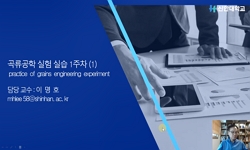The applicability of electronic nose was tested to detect lipid peroxidation in chickens and to measure antioxidant effect of astaxanthin in chicken carcasses. Two sources of astaxanthin were fed to 62-wk-old spent laying hens to improve meat quality:...
http://chineseinput.net/에서 pinyin(병음)방식으로 중국어를 변환할 수 있습니다.
변환된 중국어를 복사하여 사용하시면 됩니다.
- 中文 을 입력하시려면 zhongwen을 입력하시고 space를누르시면됩니다.
- 北京 을 입력하시려면 beijing을 입력하시고 space를 누르시면 됩니다.

Discrimination of Astaxanthin Fed Laying Hens and Their Peroxidated Carcasses by Electronic Nose
한글로보기https://www.riss.kr/link?id=A103834343
- 저자
- 발행기관
- 학술지명
- 권호사항
-
발행연도
2010
-
작성언어
English
- 주제어
-
등재정보
KCI등재
-
자료형태
학술저널
- 발행기관 URL
-
수록면
215-219(5쪽)
- 제공처
- 소장기관
-
0
상세조회 -
0
다운로드
부가정보
다국어 초록 (Multilingual Abstract)
The applicability of electronic nose was tested to detect lipid peroxidation in chickens and to measure antioxidant effect of astaxanthin in chicken carcasses. Two sources of astaxanthin were fed to 62-wk-old spent laying hens to improve meat quality: natural astaxanthin (NA) from the red yeast, Phaffia rhodozyma, and synthetic astaxanthin (SA) from chemical synthesis. One hundred forty four ISA Brown laying hens were used in a 6-wk feeding trial. Three treatments consisted of the basal diet (control), SA (100 mg astaxanthin/kg basal diet) and NA (50 mg astaxanthin/kg basal diet). The astaxanthin levels of SA and NA were set to give a similar degree of skin pigmentation. After 6-wk feeding of astaxanthin, the skins from NA and SA were discriminated from the control by electronic nose. However, electronic nose failed to distinguish between SA and NA skins after 6-wk feeding. The astaxanthin level differences between skins of SA and NA were not remarkable during the 6-wk trial. The lipid peroxide formation in skin was significantly decreased by SA but not by NA. The antioxidation effect of SA was detected by electronic nose because SA skin was discriminated from others. NA was a better pigmentation agent than SA, but the reverse was true in antioxidation. Electronic nose is applicable for detecting astaxanthin in chicken, and meat off-flavor caused by lipid peroxidation during storage.
동일학술지(권/호) 다른 논문
-
- 韓國家禽學會
- 손시환(Sea Hwan Sohn)
- 2010
- KCI등재
-
토종오리와 육용오리의 교배 조합이 생산성 및 도체 수율에 미치는 영향
- 韓國家禽學會
- 김학규(Hak-Kyu Kim)
- 2010
- KCI등재
-
Discrimination of Astaxanthin Fed Laying Hens and Their Peroxidated Carcasses by Electronic Nose
- 韓國家禽學會
- Young-An Kwon
- 2010
- KCI등재
-
- 韓國家禽學會
- 양시용(Si-Yong Yang)
- 2010
- KCI등재




 ScienceON
ScienceON



